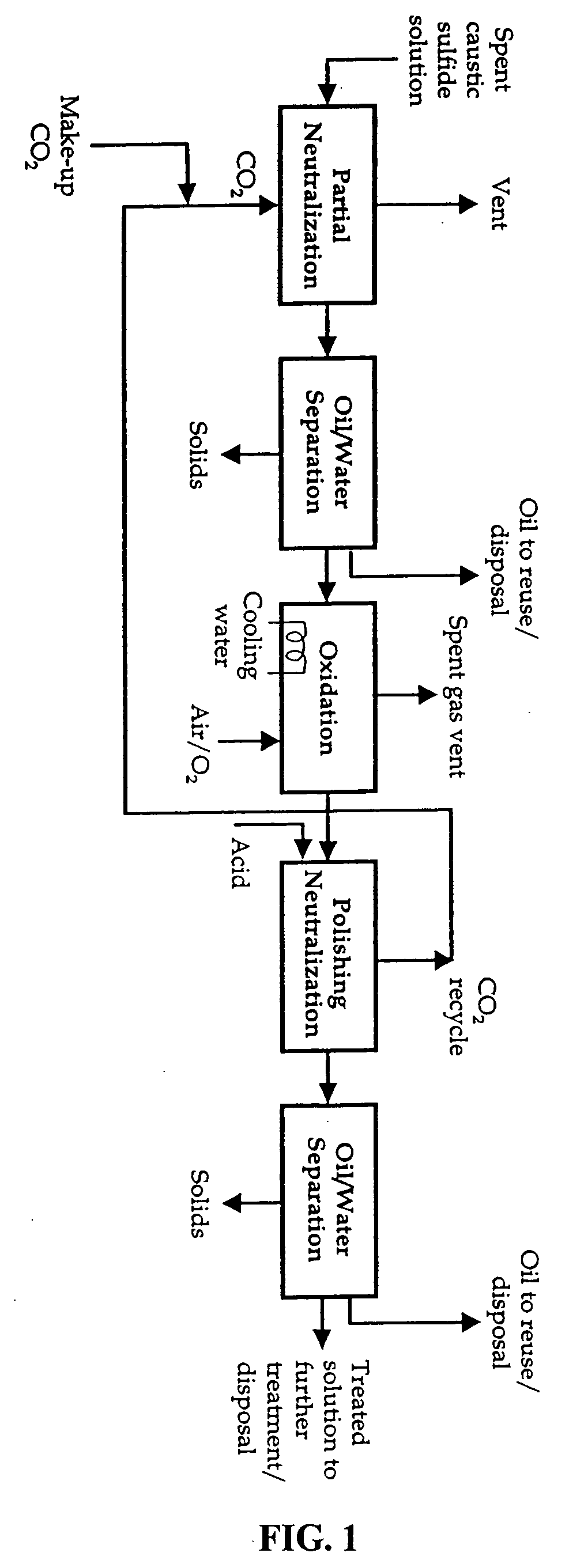Caustic solution treatment process
- Summary
- Abstract
- Description
- Claims
- Application Information
AI Technical Summary
Benefits of technology
Problems solved by technology
Method used
Image
Examples
example
[0022] A spent caustic solution was treated with gaseous CO2 in a bench-scale laboratory treatability study at various levels of pH control. The spent caustic solution was characterized as follows:
pH13.9Sulfide110 g / L as Na2OSodium4.9 weight %Acid Oils5 weight %Specific gravity1.099
[0023] The following results were obtained:
NO CO2NEUTRALIZATIONNEUTRALIZATIONBUBBLINGTO pH˜10TO pH pH13.910.19.3H2SNoNoYespresent inhead space(measuredbyDraegertube)FoamingYesNo—duringoxidationWith airbubbling
[0024] Neutralization of the spent caustic solution with dilute H2SO4 was characterized by the presence of H2S in the head space.
[0025] The COD of the spent caustic solution aqueous layer measured by HACH method at various levels of treatment were as follows:
ScreeningCODTreatment level(mg / L)Untreated147,000Neutralization (Step 1) with CO2 to pH 9.8-1072,900Separation of oily layer (Step 2) with air oxidation of35,700Aqueous layer (Step 3) which was filtered after oxidationAcidification with H2...
PUM
| Property | Measurement | Unit |
|---|---|---|
| Density | aaaaa | aaaaa |
| Density | aaaaa | aaaaa |
| Density | aaaaa | aaaaa |
Abstract
Description
Claims
Application Information
 Login to View More
Login to View More - R&D
- Intellectual Property
- Life Sciences
- Materials
- Tech Scout
- Unparalleled Data Quality
- Higher Quality Content
- 60% Fewer Hallucinations
Browse by: Latest US Patents, China's latest patents, Technical Efficacy Thesaurus, Application Domain, Technology Topic, Popular Technical Reports.
© 2025 PatSnap. All rights reserved.Legal|Privacy policy|Modern Slavery Act Transparency Statement|Sitemap|About US| Contact US: help@patsnap.com


